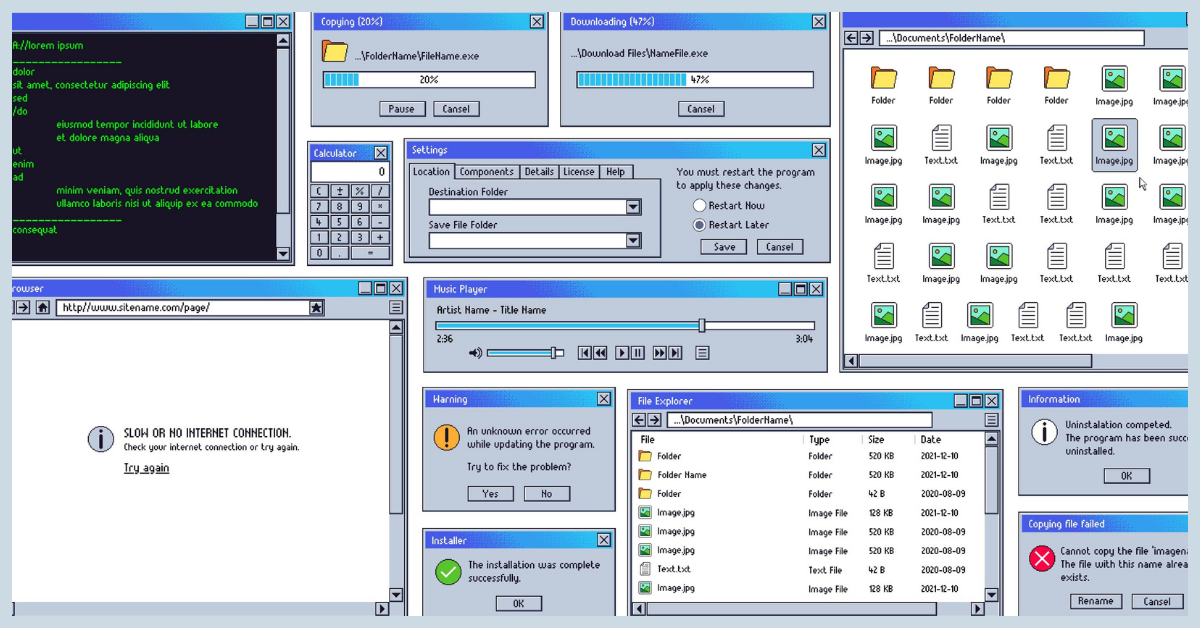As a full-service custom software services and business consulting agency, DHx...
-
Software Services
Software Services
- Workflow and Design Strategy Consulting
- Application Design & Development
- Application Modernization
- Application Integrations
- Custom Portals & Websites
- Data Management & Migration
- Enterprise Resource Planning
- Custom Sales Platforms
- Microsoft Access Migrations
- Cloud Migrations
- Custom Support Services
- eLearning Solutions
Recent Blog
 2024 in Tech: What's Changed and What's Nextread more
2024 in Tech: What's Changed and What's Nextread more -
Field Services
Field Services
Recent Blogs
 2024 in Tech: What's Changed and What's Nextread more
2024 in Tech: What's Changed and What's Nextread moreAs a full-service custom software services and business consulting agency, DHx...
-
Financial Services
Financial Services
Recent Blog
 2024 in Tech: What's Changed and What's Nextread more
2024 in Tech: What's Changed and What's Nextread moreAs a full-service custom software services and business consulting agency, DHx...
- Technologies
- Case Studies
-
About
Recent Blog
 2024 in Tech: What's Changed and What's Nextread more
2024 in Tech: What's Changed and What's Nextread moreAs a full-service custom software services and business consulting agency, DHx...
- Let's Connect
-
Software Services
- Workflow and Design Strategy Consulting
- Application Design & Development
- Application Modernization
- Application Integrations
- Custom Portals & Websites
- Data Management & Migration
- Enterprise Resource Planning
- Custom Sales Platforms
- Microsoft Access Migrations
- Cloud Migrations
- Custom Support Services
- eLearning Solutions
- Field Services
- Financial Services
- Technologies
- Case Studies
- About
- Let's Connect
-
Software Services
Software Services
- Workflow and Design Strategy Consulting
- Application Design & Development
- Application Modernization
- Application Integrations
- Custom Portals & Websites
- Data Management & Migration
- Enterprise Resource Planning
- Custom Sales Platforms
- Microsoft Access Migrations
- Cloud Migrations
- Custom Support Services
- eLearning Solutions
Recent Blog
 2024 in Tech: What's Changed and What's Nextread more
2024 in Tech: What's Changed and What's Nextread moreAs a full-service custom software services and business consulting agency, DHx...
-
Field Services
Field Services
Recent Blogs
 2024 in Tech: What's Changed and What's Nextread more
2024 in Tech: What's Changed and What's Nextread moreAs a full-service custom software services and business consulting agency, DHx...
-
Financial Services
Financial Services
Recent Blog
 2024 in Tech: What's Changed and What's Nextread more
2024 in Tech: What's Changed and What's Nextread moreAs a full-service custom software services and business consulting agency, DHx...
- Technologies
- Case Studies
-
About
Recent Blog
 2024 in Tech: What's Changed and What's Nextread more
2024 in Tech: What's Changed and What's Nextread moreAs a full-service custom software services and business consulting agency, DHx...
- Let's Connect
-
Software Services
- Workflow and Design Strategy Consulting
- Application Design & Development
- Application Modernization
- Application Integrations
- Custom Portals & Websites
- Data Management & Migration
- Enterprise Resource Planning
- Custom Sales Platforms
- Microsoft Access Migrations
- Cloud Migrations
- Custom Support Services
- eLearning Solutions
- Field Services
- Financial Services
- Technologies
- Case Studies
- About
- Let's Connect
It's Time to Modernize and Leave Legacy Technology in the Past

Are outdated legacy software and processes holding your business back? While updating longstanding solutions might seem risky, maintaining severely outdated infrastructure can be even more harmful for organizations in the long run. From security risks to high costs, and losing support, outdated systems fall painfully short in serving the modern customer and business needs. Here are five compelling reasons to modernize your digital infrastructure in 2024:
1. Bolster Security
Many older legacy systems were built before threats like ransomware, data breaches, and malicious hacking existed. Continuing to run your business with vulnerable legacy software puts your customer data and operations at risk. Modernizing to leverage embedded security protections proactively shields your organization.
2. Drive Efficiency
Legacy systems are often bogged down by an overly manual workflow process full of bottleneck delays (and data entry errors). Your employees waste time cross-logging entries between disparate systems or waiting for slow processes to finish. Modernization and implementation of automated tasks can significantly improve productivity and data accuracy.
3. Scalability and Flexibility
Older system infrastructures often struggle to accommodate rapid growth or sudden increases in demand. Modern cloud-enabled and scalable software solutions allow businesses to scale resources up or down as needed. This scalability ensures that organizations can easily adjust their operations without significant downtime or disruptions, supporting growth without compromising performance.
4. Enhanced Customer Experience
A modernized digital infrastructure enables businesses to deliver better customer experiences. Faster response times, personalized services, and seamless interactions across digital channels are better supported with an updated infrastructure. By leveraging analytics and data-driven insights, companies can track customer behavior, tailor offerings, and anticipate needs, ultimately improving customer satisfaction and loyalty.
5. Cost Efficiency and Resource Optimization
Legacy systems often require higher maintenance costs and lack the cost-effectiveness of modern solutions. As time goes on, many systems are no longer supported or have a custom-built architecture that requires costly maintenance patches. By migrating to modern infrastructure, businesses can reduce operational expenses associated with maintaining outdated systems, increase energy efficiency, and optimize resource allocation. Cloud-enabled solutions, for instance, offer pay-as-you-go models that reduce upfront costs and allow for better resource utilization.
Ready to let go of your legacy software?
Legacy software strictly limits an organization’s ability to deploy new capabilities, enter emerging markets, or meet shifting customer expectations. Transitioning to more agile, cloud-enabled solutions empowers innovation through speed, flexibility, and increased team productivity.
So, the sooner you leave restrictive legacy systems in the rearview mirror through careful modernization planning, the faster your organization will gain a competitive edge by leveraging future-forward technology. From cost savings and growth opportunities to improved security and productivity, proactively moving your digital infrastructure forward is the key to future-proofing your business.
Ready to modernize but uncertain about the first step? Start the discussion with DHx to discover potential solutions to meet your specific business needs and goals. Schedule a meeting.
- By DHx SoftwareYou may also like

As a full-service custom software services and business consulting agency, DHx has spent 2024 focusing on what matters most: solving real business problems for our clients. While the tools and...

Are you still running your business on outdated technology? If so, you might be paying a higher price than you realize. Legacy systems, while familiar, can be a significant financial burden. Let's...
